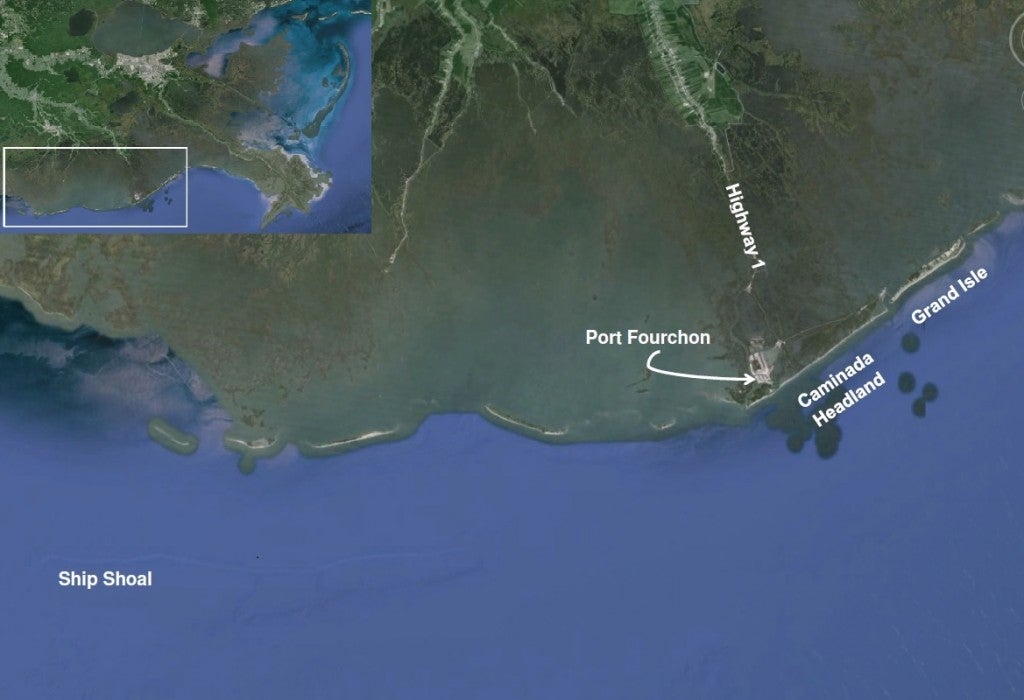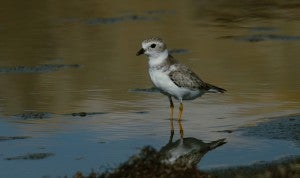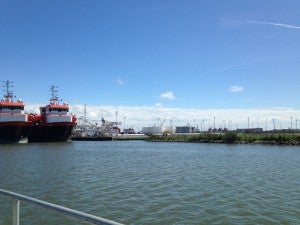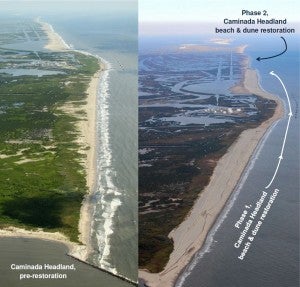A visit to the Caminada Headland Beach & Dune Restoration project
By Estelle Robichaux, Restoration Project Analyst, Environmental Defense Fund
The BP oil spill has had devastating impacts on Gulf Coast ecosystems and communities, but coastal Louisiana’s land loss crisis began decades before the disaster. The Clean Water Act fines and other money paid through settlements relating to the spill offer an unprecedented opportunity to restore Gulf Coast habitats and natural resources.
Many of the early restoration projects funded in Louisiana are focused on barrier islands because of the important role they play in the coastal ecosystem and the severe impacts they experienced during the spill. Louisiana’s barrier islands were heavily oiled because they act as a “first line of defense” against disturbance, such as storm surge or, in this case, oil. In fact, Louisiana’s coastal islands continue to experience re-oiling even today.
Caminada Headland Beach & Dune Restoration
One very important barrier island restoration project currently underway is the Caminada Headland Beach & Dune restoration, which is part of our coalition’s priority project, Belle Pass to Caminada Pass Barrier Island Restoration. The Caminada Headland forms the western edge of the Barataria Basin barrier system and has experienced some of the highest rates of shoreline retreat and land loss along the Louisiana coast.
I recently had the opportunity to see the first constructed phase of the Caminada restoration project on a field trip hosted by our partner, Restore or Retreat, and the Greater Lafourche Port Commission. It was inspiring to see restoration at work! There were birds and crabs on the shoreline, small plants naturally re-vegetating and the different project components working together – breakwaters protecting the shore and the sand fence having created a substantial dune. More projects like this are exactly what coastal Louisiana needs.
Why is the Caminada Headland important?
The Caminada Headland is a significant feature along Louisiana’s coastline because it provides critical habitat for important neotropical migratory birds and threatened or endangered species, such as the piping plover and Kemp’s ridley sea turtle. It is also a buffer from storm surge and waves for valuable public and private infrastructure, including Port Fourchon and Highway 1, which provides the only evacuation route for coastal communities such as Grand Isle, La.
Port Fourchon is an important nexus in our national energy infrastructure system. Approximately 18 percent of the nation’s oil supply is transported through the port, and it is the land base for the Louisiana Offshore Oil Port (LOOP). The LOOP is connected to refineries across the country, which collectively make up half of the oil refining capacity in the U.S., and handles about 15 percent of our foreign oil imports. The activity, infrastructure and continuing growth of the port is truly impressive!
What makes this restoration project unique?
The first phase of the Caminada Headland restoration project created and enhanced more than 300 acres of beach and dune habitat. This project used a mix of sediment pumped from the Mississippi River and high-quality, beach-compatible sand from Ship Shoal, a large marine sand deposit just offshore of Isles Dernieres. Most of the other nearby sand sources have been exhausted, so this was the first time that sediment from Ship Shoal has been used for restoration.
The planning and design of the Caminada project was funded using the Coastal Impact Assistance Program and Louisiana state surplus funds, but they only had enough money (~$70 million) to restore a portion of the island. The success of this first phase, however, was leveraged when more funding became available, via the National Fish & Wildlife Foundation, to complete restoration of Caminada’s beach and dune habitat.
Construction on the first phase of the beach and dune habitat restoration is complete and soon the entire project area will be planted with native vegetation. The second phase of construction for the Caminada Headland restoration project – which at 489 acres, is the largest restoration project ever undertaken by Louisiana’s Coastal Protection and Restoration Authority – should begin within the next month. Design for restoration of the Caminada Headland back barrier marsh is also currently underway.
Check out my previous post in this series, Exploring Early Coastal Restoration Funding and Projects



